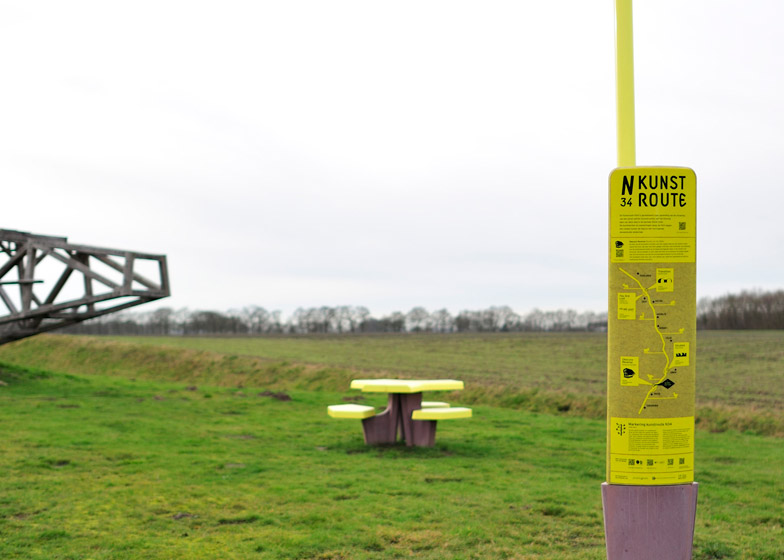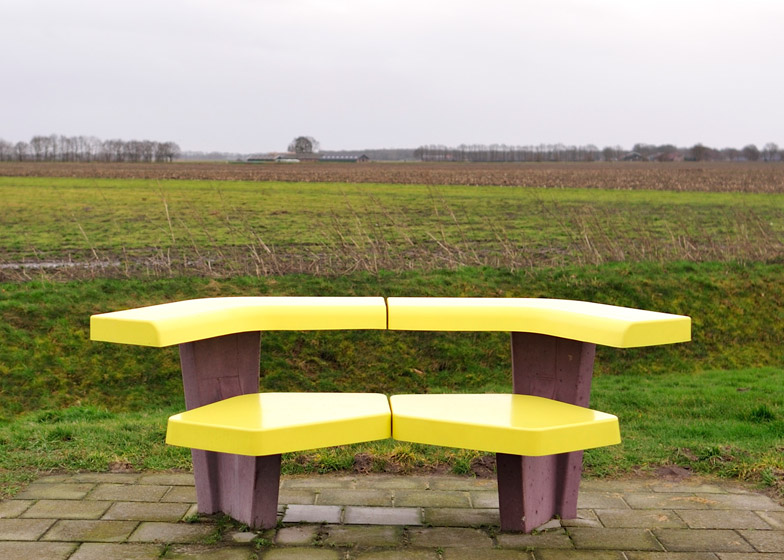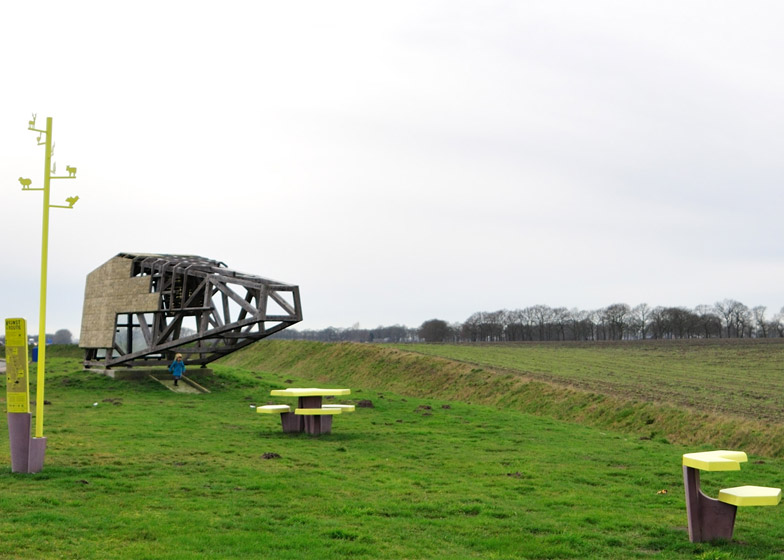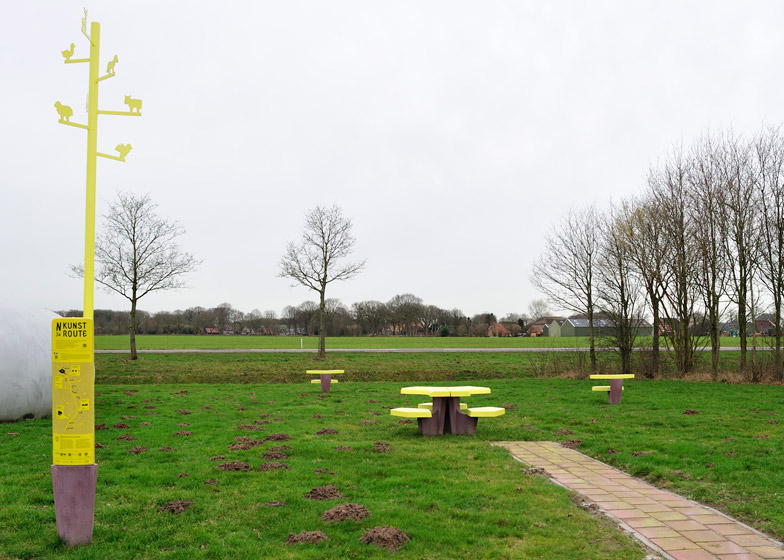Dutch designer Ineke Hans has created signposts and furniture to complement an art trail that lines a busy motorway in northern Holland (+ slideshow).
As part of an attempt to regenerate the area of Provincie Drenthe surrounding the N34 road – an old trade route through northern Holland – a series of outdoor artworks and sculptures by renowned Dutch artists have been commissioned.
Ineke Hans – whose past projects include furniture collections for Cappellini and cutlery for Royal VKB – was approached to create something that would signpost visitors to each piece and visually link them together.
Her solution was to create a collection of signage, information posts, distance markers, seats, benches and picnic tables.
The pieces feature bright yellow modules made from a new sustainable material called Nabasco (nature-based composite), which is similar to fibreglass but uses natural materials like flax, jute, coconut and hemp instead of glass fibres, bound together with bio-based or polyester resin.
Other sections of the furniture are formed from recycled plastic, steel and concrete.
As well as encouraging motorists to enjoy the artworks, the objects create areas for people to wait for a bus, have a picnic, make a phone call or simply take a break from their journey.
"We designed elements that all have the same base, but turn into milestones, information poles and seats where needed," said the designer. "Single seats become benches or picnic tables, depending on how they are positioned."
Hans divided the N34 into four sections, allocating each an animal according to its culture and history.
The first section is represented by a goose because a goose market used to take place in Coevorden, a city along the route, while the second section is represented by the sheep indigenous to the moorland landscape the route passes through.
"The animals on the information poles became metaphors for facts, sights and the diversity of the N34's surroundings," said Hans.
The Nabasco used for the seats, table surfaces and other base-tops also draws on the local vernacular. The material was developed in the Netherlands, and flax and hemp are both grown locally to the N34.
"These materials more or less 'belong' to the Provincie Drenthe and fit with the 'green heart' that this province likes to affiliate itself with," Hans said.
The project is one of the first applications of this material in a public project, which is also being tested for possible use in train nose cones.






